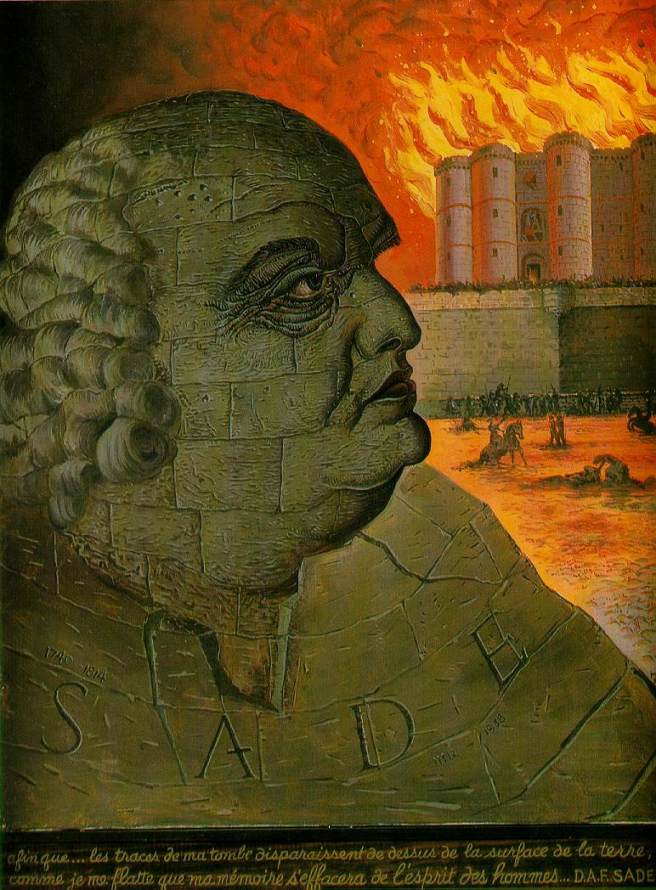
In 1789 the Marquis De Sade was one of eight prisoners held in the state prison of Bastille. For a number of years he had been detained under lettres de cachet, a system were the King could imprison a subject without trial and without the opportunity of appeal. Lettres de cachet were one of the most hated features of the ancien regime, as it was open to a wide variety of abuses, notably the possible life-long detainment of embarrassing family members by wealthy and noble petitioners.
On the morning of July 2, the Marquis was in a highly excitable state and nervously paced the confines of his cell. His wife had told him about the chaos on the streets of Paris. The Marquis had noticed the stepping up of military preparations within the fortress. At noon his warden came to tell the Marquis that his daily walk around the prison grounds was cancelled for today, by the order of the commandant. Outraged by the loss of this privilege, the Marquis grabbed a long metal funnel, that was usually used to empty his chamber pot into the moat below, but also worked as an impromptu megaphone, and began to harangue the crowds below that the guards were slitting the prisoners throats and called upon the assembled mob to storm the fortress. After being subdued with great difficultly by a number of guards the Marquis was transferred from the Bastille to the mental asylum of Charenton.
Just 12 days later the Bastille was indeed stormed by the revolutionaries and the weapons and ammunition’s cache were seized. As a symbol of Royal authority its fall was especially significant. The French Revolution had begun in earnest and the world would never be the same again. One of the first things the new government did was to abolish the lettres de cachet and so on April the 2nd 1790 the Marquis Donatien Aphonse Francois De Sade left Charenton a free man for the first time in over a decade: and with this release was born Citizen Sade, revolutionary and man of letters.
The above imaginary portrait by Man Ray refers to this central event in De Sade’s life. De Sade is the imprisoned man whose entire countenance is made out of prison bricks who dreams of an absolute and terrifying freedom, looking on at the conflagration of the hated citadel of oppression. The text at the bottom of the painting is a quote from the De Sade’s last will and testament.
